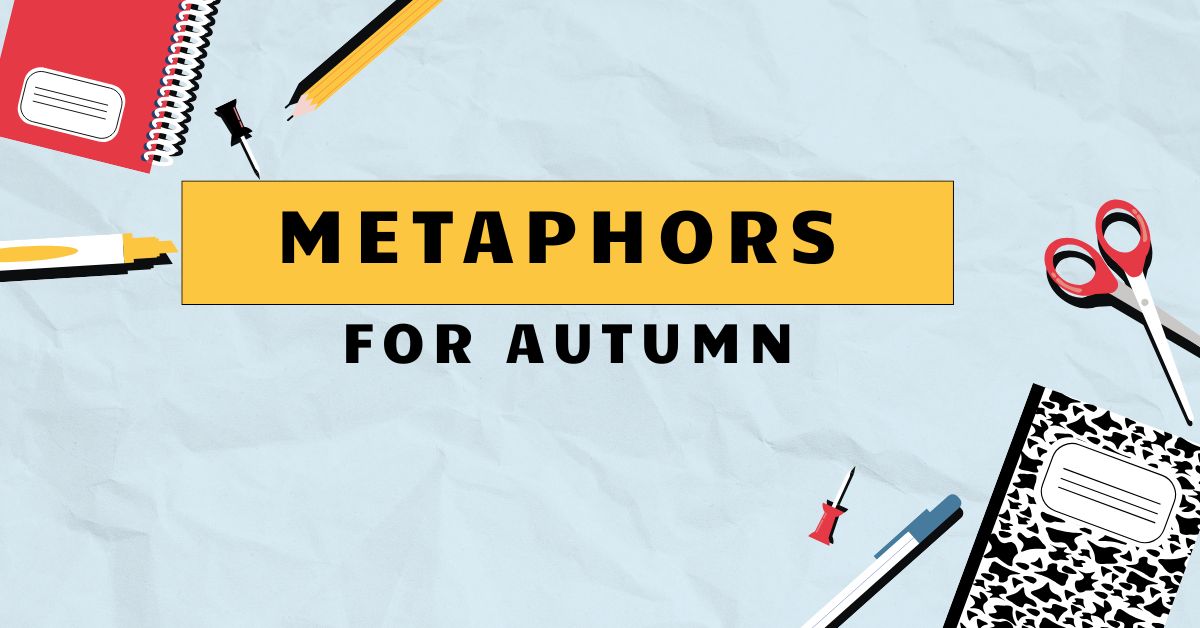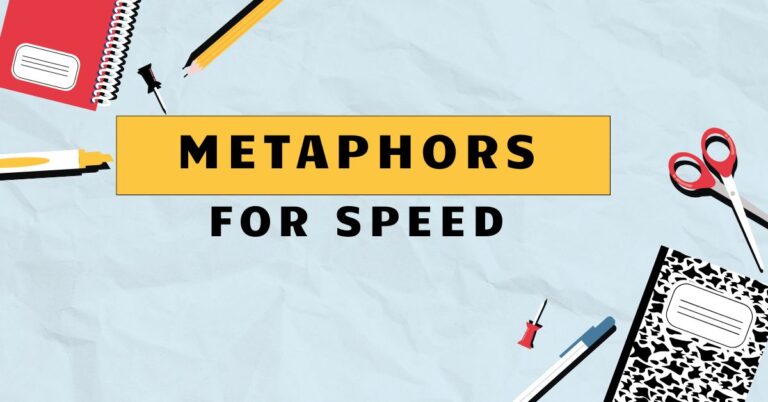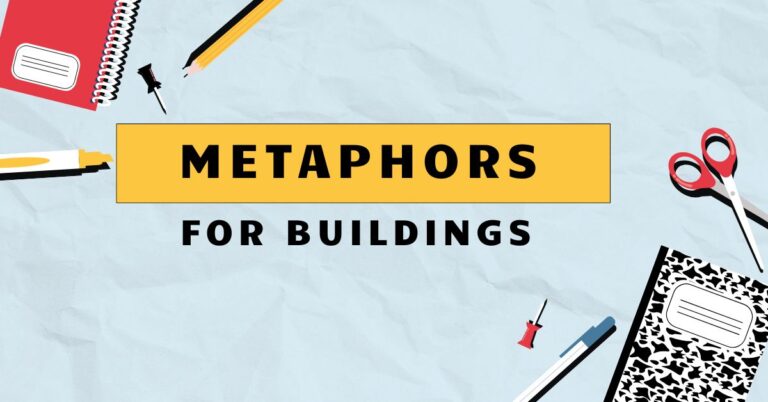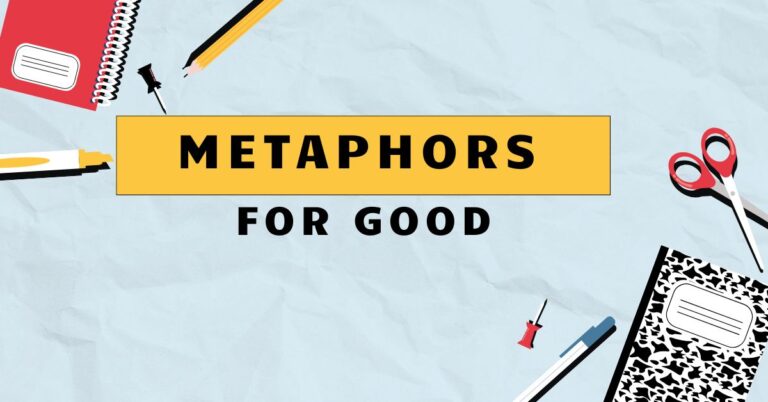31 Autumn Metaphors: Understanding Figurative Language in Fall
Autumn, with its vibrant colors and crisp air, is a season rich in imagery and symbolism. Understanding metaphors related to autumn not only enhances our appreciation of literature and poetry but also deepens our comprehension of figurative language in English.
This article explores the various types of autumn metaphors, their structural elements, usage rules, and common pitfalls. Whether you are an English language learner, a literature student, or simply someone who loves the beauty of fall, this comprehensive guide will equip you with the knowledge to recognize, interpret, and use autumn metaphors effectively.
Table of Contents
- Introduction
- Definition of Autumn Metaphors
- Structural Breakdown
- Types of Autumn Metaphors
- Examples of Autumn Metaphors
- Usage Rules
- Common Mistakes
- Practice Exercises
- Advanced Topics
- FAQ
- Conclusion
Definition of Autumn Metaphors
A metaphor is a figure of speech that directly compares two unlike things without using “like” or “as.” Autumn metaphors, specifically, use the season of autumn to represent abstract ideas, emotions, or experiences. These metaphors often draw on the characteristic elements of fall, such as falling leaves, harvest time, cooler temperatures, and the changing colors of nature.
The essence of an autumn metaphor lies in its ability to evoke vivid imagery and convey deeper meanings beyond the literal description of the season.
Autumn metaphors serve multiple functions in literature and everyday language. They can add emotional depth to writing, create a stronger connection with the reader, and offer a fresh perspective on familiar concepts.
By using autumn as a point of comparison, writers can tap into the rich symbolism associated with this season, such as aging, decline, maturity, or preparation for the future. The contexts in which autumn metaphors are used vary widely, ranging from poetry and prose to everyday conversations and advertising.
Structural Breakdown
Understanding the structure of an autumn metaphor involves identifying thetenor(the subject being described) and thevehicle(the autumn element used to describe it). The tenor is the underlying concept or idea that the metaphor aims to convey, while the vehicle is the autumn-related image or concept that carries the metaphorical weight.
For example, in the metaphor “Her life was in its autumn,” the tenor is ‘her life,’ and the vehicle is ‘autumn.’ The connection between the tenor and vehicle is what creates the metaphorical meaning.
The effectiveness of an autumn metaphor depends on the clarity and relevance of the connection between the tenor and the vehicle. A well-crafted metaphor should resonate with the reader and evoke a specific emotional or intellectual response.
The structural pattern typically involves attributing qualities or actions associated with autumn to the tenor, thereby enriching its meaning and creating a more evocative image. The context in which the metaphor is used also plays a crucial role in shaping its interpretation.
For instance, the metaphor “The autumn of his career” uses ‘autumn’ (the vehicle) to describe the later stages of ‘his career’ (the tenor), implying a period of decline or winding down.
Types of Autumn Metaphors
Personification
Personification involves giving human qualities to inanimate objects or abstract concepts. In the context of autumn metaphors, this often means attributing human emotions, actions, or characteristics to the season itself or its elements.
This technique can make the imagery more vivid and relatable.
Examples of personification in autumn metaphors include phrases like “Autumn whispers secrets through the trees,” where autumn is given the human ability to whisper. Another example is “The wind danced through the fallen leaves,” where the wind is portrayed as dancing.
These metaphors create a sense of connection between the natural world and human experience.
Symbolic Metaphors
Symbolic metaphors use autumn to represent broader abstract concepts such as aging, decline, maturity, or change. These metaphors rely on the established symbolism of autumn to convey deeper meanings without explicitly stating them.
For instance, “The autumn of life” is a common symbolic metaphor representing the later years of a person’s life. Similarly, “Autumn of an empire” can symbolize the decline of a powerful nation.
These metaphors tap into the inherent associations of autumn with endings and transitions.
Color Metaphors
Color metaphors focus on the vibrant hues of autumn foliage to represent various emotions, experiences, or qualities. The rich palette of reds, oranges, yellows, and browns provides a fertile ground for metaphorical expression.
Examples include “Her hair had the russet hues of autumn,” where the color of hair is compared to the reddish-brown shades of autumn leaves. Another example is “The golden days of autumn,” which evokes a sense of warmth, richness, and nostalgia.
These color metaphors add visual depth and emotional resonance to descriptions.
Weather Metaphors
Weather metaphors utilize the characteristic weather patterns of autumn, such as crisp air, falling rain, or blustery winds, to symbolize different aspects of life or emotions. These metaphors often convey a sense of change, transition, or even turbulence.
For example, “A storm in the autumn of his years” might represent a period of intense difficulty or upheaval in someone’s later life. “The crisp air of autumn clarity” could symbolize a moment of clear understanding or renewed perspective.
These weather metaphors add a dynamic and evocative dimension to metaphorical language.
Examples of Autumn Metaphors
The following tables provide extensive examples of autumn metaphors, categorized by type, to illustrate their diverse applications and nuances.
Table 1: Personification in Autumn Metaphors
This table illustrates how autumn and its elements are personified, given human-like qualities, to create vivid imagery and emotional connections.
| Metaphor | Analysis |
|---|---|
| Autumn whispers secrets through the trees. | Autumn is given the ability to whisper, suggesting a sense of mystery and intimacy. |
| The wind danced through the fallen leaves. | The wind is personified as dancing, creating a lively and playful image. |
| Autumn sighed as the last leaves fell. | Autumn is depicted as sighing, conveying a sense of melancholy or resignation. |
| The trees wept golden tears of leaves. | Trees are shown weeping, turning falling leaves into tears, symbolizing loss or sadness. |
| Autumn painted the hills with vibrant colors. | Autumn is portrayed as an artist, painting the landscape with its characteristic hues. |
| The season hugged the earth with a cool embrace. | Autumn is given the action of hugging, suggesting comfort and closeness. |
| Autumn sang a lullaby to the sleeping summer. | Autumn is singing, lulling summer to sleep, a gentle transition. |
| The harvest moon watched over the fields. | The moon is personified as watching, providing a sense of protection. |
| Autumn tiptoed in, replacing summer’s warmth. | Autumn is sneaking, stealthily replacing summer. |
| The leaves gossiped as they swirled in the wind. | Leaves are gossiping, creating a sense of chatter and movement. |
| Autumn knitted a blanket of fog. | Autumn is knitting, creating a cozy and protective image. |
| The wind howled its autumn sorrow. | The wind is howling with sorrow, expressing deep sadness. |
| Autumn shrugged off the heat of summer. | Autumn is shrugging, dismissing the summer heat. |
| The season smiled with crisp, sunny days. | Autumn is smiling, bringing joy with the weather. |
| Autumn dreamed of winter’s snow. | Autumn is dreaming, looking forward to the next season. |
| The trees stretched their arms, reaching for the sun. | Trees are stretching, yearning for sunlight. |
| Autumn chuckled as the squirrels gathered nuts. | Autumn is chuckling, amused by the squirrels’ activity. |
| The fog crept in, stealing the light. | Fog is creeping, taking away the daylight. |
| Autumn frowned at the approaching cold. | Autumn is frowning, displeased with the cold weather. |
| The leaves danced a farewell jig. | Leaves are dancing, saying goodbye to their branches. |
| Autumn sighed, preparing for the long sleep of winter. | Autumn is sighing, anticipating the winter slumber. |
| The season whispered promises of spring’s return. | Autumn is whispering, offering hope for the future. |
| Autumn wept tears of rain. | Autumn is weeping, the rain symbolizing sadness. |
| The wind sang a mournful tune. | The wind is singing, the tune expressing sorrow. |
Table 2: Symbolic Autumn Metaphors
This table presents metaphors where autumn symbolizes abstract concepts, such as aging, decline, transition, and change, providing a deeper understanding of life stages and experiences.
| Metaphor | Analysis |
|---|---|
| The autumn of life. | Represents the later years of a person’s life, a time of reflection and decline. |
| Autumn of an empire. | Symbolizes the decline and fall of a powerful nation or civilization. |
| The autumn of his career. | Indicates the final stages of a person’s professional life, winding down towards retirement. |
| An autumn romance. | Suggests a relationship that blossoms later in life, characterized by maturity and wisdom. |
| Autumn of hope. | Represents a time when hope is waning or diminishing. |
| The autumn of their friendship. | Indicates a friendship that is nearing its end, possibly due to distance or conflict. |
| Autumn of creativity. | Suggests a period when one’s creative output is slowing down. |
| An autumn harvest of memories. | Represents a time to reflect on and appreciate past experiences. |
| The autumn of innocence. | Symbolizes the loss of innocence and the onset of maturity. |
| Autumn of a political movement. | Indicates the decline and eventual end of a political movement. |
| Autumn of a tradition. | Represents the fading away of a long-held tradition. |
| Autumn of a building. | Symbolizes the decaying or falling apart of a building. |
| The autumn of an idea. | Indicates the final stages or decline of an idea. |
| Autumn of a dream. | Represents the fading away or abandonment of a dream. |
| The autumn of a project. | Symbolizes the final stages of a project. |
| Autumn of a season. | Indicates the final stages of that season. |
| Autumn of a love affair. | Represents the end of a love affair. |
| Autumn of a reign. | Symbolizes the end of a ruler’s time in power. |
| The autumn of a novel. | Indicates the final chapters or conclusion of a novel. |
| Autumn of a song. | Represents the final notes or ending of a song. |
| Autumn of a painting. | Symbolizes the final touches or completion of a painting. |
| Autumn of a play. | Indicates the final act or conclusion of a play. |
| Autumn of a dance. | Represents the final steps or ending of a dance. |
| Autumn of a lecture. | Symbolizes the final points or conclusion of a lecture. |
Table 3: Color Metaphors in Autumn
This table explores metaphors that use the colors of autumn to represent emotions, experiences, and qualities, adding visual and emotional depth to descriptions.
| Metaphor | Analysis |
|---|---|
| Her hair had the russet hues of autumn. | Compares the color of hair to the reddish-brown shades of autumn leaves, implying warmth and richness. |
| The golden days of autumn. | Evokes a sense of warmth, richness, and nostalgia associated with sunny autumn days. |
| The scarlet sunset of autumn. | Uses the vibrant red of the sunset to symbolize passion, intensity, or the end of something beautiful. |
| The amber glow of autumn evenings. | Suggests a warm, comforting, and mellow atmosphere during autumn evenings. |
| A bronze harvest. | Represents a rich and bountiful harvest, symbolizing success and abundance. |
| The crimson leaves of memory. | Uses the deep red color to symbolize strong, vivid memories. |
| The ochre fields of autumn. | Creates a visual image of expansive fields in the earthy tones of autumn. |
| The silver frost of autumn mornings. | Evokes the cool, crisp beauty of frost-covered landscapes in autumn. |
| The copper sky at twilight. | Paints a picture of a sky with metallic, reddish-brown tones at dusk. |
| The tawny grasses of autumn. | Describes the grasses turning a brownish-yellow color in the fall. |
| The saffron spice of autumn. | Implies a warm, vibrant, and flavorful essence of autumn. |
| The chestnut warmth of autumn. | Suggests a cozy, comforting feeling associated with autumn. |
| The mahogany depths of autumn. | Evokes a sense of richness and depth in the fall season. |
| The auburn whispers of autumn. | Uses the reddish-brown color to describe the soft, gentle sounds of autumn. |
| The sepia tones of autumn photographs. | Creates a nostalgic and vintage feel, reminiscent of old photographs. |
| The rustling rust of autumn. | Combines color and sound to evoke a strong sensory experience of autumn. |
| The olive shadows of autumn. | Suggests the muted, earthy tones of shadows in the fall landscape. |
| The charcoal skies of autumn storms. | Paints a picture of dark, ominous skies during autumn storms. |
| The ivory veil of autumn fog. | Evokes a delicate and ethereal image of fog in the fall. |
| The peach glow of autumn sunrises. | Creates a warm and gentle image of the morning sun. |
| The beige landscape of autumn. | Suggests a muted and neutral-toned scenery of fall. |
| The maroon richness of autumn. | Evokes a sense of deep and luxurious textures in the fall. |
| The amber light of autumn afternoons. | Creates a cozy and warm feeling of late afternoon sun. |
| The bronze statues of autumn. | Implies a lasting and timeless quality in the fall. |
Table 4: Weather Metaphors in Autumn
This table shows how weather conditions typical of autumn are used metaphorically to represent various aspects of life, emotions, or situations.
| Metaphor | Analysis |
|---|---|
| A storm in the autumn of his years. | Represents a period of intense difficulty or upheaval in someone’s later life. |
| The crisp air of autumn clarity. | Symbolizes a moment of clear understanding or renewed perspective. |
| The gentle rain of autumn reflection. | Suggests a time of quiet contemplation and introspection. |
| The blustery winds of autumn change. | Represents the rapid and sometimes turbulent changes that occur in life. |
| The fog of autumn uncertainty. | Symbolizes a lack of clarity or direction in a situation. |
| The frost of autumn disappointment. | Indicates a feeling of coldness or disillusionment. |
| The sunshine of autumn hope. | Represents a ray of optimism and positivity. |
| The shadows of autumn fear. | Symbolizes underlying anxieties or worries. |
| The cool breeze of autumn relief. | Suggests a sense of comfort and easing of tension. |
| The dry leaves of autumn neglect. | Represents something that has been overlooked or forgotten. |
| The gathering clouds of autumn anxiety. | Symbolizes increasing worry or apprehension. |
| The stillness of autumn peace. | Represents a moment of tranquility and calm. |
| The chilly nights of autumn loneliness. | Suggests feelings of isolation and solitude. |
| The fading light of autumn resignation. | Symbolizes acceptance of a difficult situation. |
| The howling winds of autumn despair. | Represents intense feelings of hopelessness. |
| The calm after the autumn storm. | Suggests a period of peace following a difficult time. |
| The swirling leaves of autumn confusion. | Symbolizes a state of being disoriented or perplexed. |
| The bare branches of autumn loss. | Represents a feeling of emptiness or bereavement. |
| The frozen ground of autumn stagnation. | Suggests a lack of progress or movement. |
| The fading colors of autumn memories. | Symbolizes past experiences becoming less vivid over time. |
| The misty mornings of autumn reflection. | Suggests a time for introspection and thought. |
| The falling temperatures of autumn indifference. | Represents a lack of interest or concern. |
| The short days of autumn brevity. | Symbolizes the fleeting nature of time or life. |
| The long nights of autumn contemplation. | Suggests a time for deep thought and reflection. |
Usage Rules
When using autumn metaphors, it’s essential to ensure that the comparison is both relevant and effective. The connection between the tenor and the vehicle should be clear and logical, allowing the metaphor to enhance understanding rather than create confusion.
Consistency in tone and imagery is also crucial for maintaining the metaphor’s impact throughout a piece of writing.
Avoid mixed metaphors, which occur when combining unrelated images or concepts within the same metaphorical expression. For example, avoid phrases like “The autumn of his life was a stormy sea,” as it mixes the autumn metaphor with a nautical one, creating a jarring effect.
Additionally, be mindful of overused or cliché metaphors, such as “The autumn of life,” and strive for originality and freshness in your metaphorical language. Consider the context and audience when selecting an autumn metaphor to ensure it resonates appropriately.
Common Mistakes
One common mistake is using autumn metaphors that are too literal or simplistic, failing to add depth or insight to the writing. For instance, saying “His hair was the color of autumn leaves” without further elaboration is a superficial comparison.
Another mistake is using metaphors that are culturally inappropriate or insensitive, particularly if the audience’s understanding of autumn symbolism differs from the writer’s.
The table below highlights some common mistakes and provides correct examples.
| Incorrect | Correct | Explanation |
|---|---|---|
| His hair was the color of autumn leaves. | His hair held the fiery brilliance of autumn leaves, a testament to his enduring spirit. | The corrected version adds depth and emotional resonance. |
| The autumn of his career was a winter storm. | The autumn of his career was a season of quiet reflection, preparing him for the winter ahead. | Avoids mixing unrelated images and maintains a consistent theme. |
| Her smile was as bright as an autumn day. | Her smile radiated the warm, golden glow of an autumn afternoon, chasing away the chill of doubt. | Adds sensory detail and emotional impact. |
| Life is an autumn. | Life is an autumn tapestry, woven with threads of memory, loss, and enduring beauty. | The corrected version provides a richer, more evocative image. |
Practice Exercises
Test your understanding of autumn metaphors with the following exercises.
Exercise 1: Identifying Autumn Metaphors
Identify the autumn metaphor in each sentence and explain its meaning.
| Question | Answer |
|---|---|
| 1. The autumn of their relationship was marked by silent evenings and unspoken regrets. | Autumn of their relationship – signifies the decline or ending of their relationship. |
| 2. Her voice had the warm, russet tones of an autumn sunset. | Russet tones of an autumn sunset – compares the color of her voice to the warm, reddish-brown hues of a sunset. |
| 3. The company experienced a blustery autumn, facing unexpected challenges and setbacks. | Blustery autumn – represents a period of turmoil and difficulty. |
| 4. The old tree stood as a sentinel, watching over the autumn of the year. | Autumn of the year – symbolizes the end of the year’s cycle. |
| 5. His paintings reflected the golden, nostalgic light of autumn memories. | Golden, nostalgic light of autumn memories – uses color and season to evoke a sense of warmth and reflection. |
| 6. The autumn of the project signaled the final stages of development. | Autumn of the project – represents the final stages of development. |
| 7. The crisp air of autumn brought a sense of clarity after a long summer of confusion. | Crisp air of autumn – Symbolizes a clear and refreshing change. |
| 8. The leader’s resignation marked the autumn of the political party’s dominance. | Autumn of the political party’s dominance – Signifies the decline and fall of the party’s power. |
| 9. The melancholy rain of autumn matched her sorrowful mood. | Melancholy rain of autumn – Symbolizes sadness and sorrow. |
| 10. The harvest of ideas came to fruition during the autumn of their collaboration. | Harvest of ideas – Represents the culmination of collaborative efforts. |
Exercise 2: Creating Autumn Metaphors
Create your own autumn metaphors to describe the following scenarios.
| Scenario | Possible Metaphor |
|---|---|
| 1. A person nearing retirement. | The autumn of his working life approached, leaves of experience falling gently. |
| 2. The end of a long and difficult project. | The project reached its autumn, a time of harvest after a long season of labor. |
| 3. A period of significant personal change. | Her life entered its autumn, a season of shedding old habits and embracing new beginnings. |
| 4. A feeling of nostalgia for past experiences. | Memories swirled like autumn leaves, each carrying echoes of laughter and tears. |
| 5. A moment of sudden clarity and understanding. | The crisp air of autumn cleared the fog of confusion, revealing the path ahead. |
| 6. A sense of loss and sadness. | A cold autumn wind swept through her heart, leaving bare branches of sorrow. |
| 7. A time of reflection and introspection. | Autumn’s gentle rain invited quiet moments of reflection, washing away the dust of daily life. |
| 8. The decline of a once-great city. | The city entered its autumn, its grand buildings echoing with the ghosts of its former glory. |
| 9. A feeling of peace and tranquility. | The stillness of an autumn afternoon settled over her, bringing a sense of profound peace. |
| 10. The culmination of years of hard work and dedication. | The autumn harvest represented years of dedication, yielding a bounty of success and fulfillment. |
Advanced Topics
For advanced learners, exploring the historical and cultural contexts of autumn metaphors can provide a deeper understanding of their significance. Different cultures may associate distinct meanings and symbols with autumn, influencing the interpretation and usage of these metaphors.
Analyzing the works of famous poets and writers who effectively use autumn metaphors, such as John Keats or Robert Frost, can offer valuable insights into the art of crafting powerful and evocative figurative language. Additionally, studying the use of autumn metaphors in visual arts, such as painting and film, can further enrich one’s understanding of their aesthetic and emotional impact.
Consider, for example, how Romantic poets used autumn to symbolize both beauty and decay, reflecting on the transient nature of life. Compare this with contemporary uses of autumn in advertising, where it might represent coziness, comfort, or the idea of “nesting” before winter.
Examining these differences reveals how metaphors adapt and evolve over time.
FAQ
Q1: What is the difference between a metaphor and a simile?
A metaphor directly compares two unlike things without using “like” or “as,” while a simile makes a comparison using “like” or “as.” For example, “Her life was an autumn” is a metaphor, whereas “Her life was *like* an autumn” is a simile. The metaphor is more direct and assertive, implying a stronger connection between the two things being compared.
Q2: How can I identify an autumn metaphor in a text?
Look for instances where autumn elements (e.g., falling leaves, harvest, colors) are used to describe something else that is not literally related to the season. The key is to identify the implied comparison and the symbolic meaning being conveyed.
Consider whether the autumn imagery is being used to represent aging, decline, transition, or other abstract concepts.
Q3: Are autumn metaphors only used in literature?
No, autumn metaphors are used in various contexts, including everyday conversations, advertising, and even scientific writing. While they are prevalent in poetry and prose, their versatility allows them to be used in any situation where figurative language can enhance understanding or create a more vivid image.
Q4: How can I avoid using cliché autumn metaphors?
To avoid clichés, focus on creating original and specific comparisons. Instead of using overused phrases like “the autumn of life,” try to develop unique metaphors that draw on specific details and sensory experiences related to autumn.
Consider the context and audience to ensure the metaphor resonates appropriately.
Q5: What is a mixed metaphor, and how can I avoid it?
A mixed metaphor combines unrelated images or concepts within the same metaphorical expression, creating a jarring or confusing effect. To avoid mixed metaphors, ensure that all elements of the metaphor are consistent and logically connected.
For example, avoid saying “The autumn of his career was a stormy sea” because it mixes the autumn metaphor with a nautical one.
Q6: How do cultural differences affect the interpretation of autumn metaphors?
Different cultures may have varying associations with autumn, which can influence the interpretation of autumn metaphors. For example, in some cultures, autumn may be primarily associated with harvest and abundance, while in others, it may be more closely linked to decline and loss.
Being aware of these cultural nuances can help avoid misinterpretations and ensure that the metaphor resonates appropriately with the intended audience.
Q7: Can autumn metaphors be used to describe positive experiences?
Yes, while autumn is often associated with decline and endings, it can also be used to describe positive experiences. For example, “the golden days of autumn” can evoke a sense of warmth, richness, and nostalgia.
The key is to choose autumn elements and imagery that align with the desired emotional tone.
Q8: What role does context play in interpreting autumn metaphors?
Context is crucial for interpreting autumn metaphors accurately. The surrounding text, the author’s intent, and the audience’s background knowledge all contribute to the metaphor’s meaning.
Consider the overall theme and tone of the piece of writing to determine how the autumn metaphor functions within the larger context.
Q9: How can I practice using autumn metaphors effectively?
Practice by writing your own sentences and short paragraphs using autumn metaphors to describe various scenarios and emotions. Experiment with different types of autumn metaphors, such as personification, symbolic metaphors, and color metaphors.
Seek feedback from others on the clarity and effectiveness of your metaphors.
Q10: Are there any specific authors or works that are known for their use of autumn metaphors?
Yes, several authors are renowned for their effective use of autumn metaphors. John Keats’s “Ode to Autumn” is a classic example of a poem that explores the beauty and symbolism of the season.
Robert Frost’s poetry also frequently features autumn imagery to convey themes of aging, change, and reflection. Exploring these works can provide valuable insights into the art of crafting compelling autumn metaphors.
Conclusion
Understanding autumn metaphors enriches our ability to interpret and appreciate literature, poetry, and everyday language. By recognizing the structural elements, different types, and usage rules of these metaphors, we can effectively use them to add depth, emotion, and insight to our writing and communication.
Avoiding common mistakes and practicing regularly will further enhance your skill in crafting powerful and evocative autumn metaphors.
Remember that the key to successful metaphor usage lies in creating clear, relevant, and original comparisons that resonate with your audience. As you continue to explore the world of figurative language, embrace the beauty and symbolism of autumn to unlock new avenues of creative expression.
By mastering autumn metaphors, you’ll be better equipped to convey complex ideas and evoke vivid imagery in your writing.







